Your cart is currently empty!
Tag: Infrastructure

Scaling Up: Strategies for Growing Your Data Center Network Infrastructure
As businesses continue to rely more on digital services and applications, the demand for scalable and reliable data center network infrastructure is at an all-time high. With the exponential growth of data being generated and processed, organizations must have a robust and flexible network infrastructure in place to support their operations and meet the needs of their customers.Scaling up a data center network infrastructure involves implementing strategies and technologies that allow for seamless expansion and increased capacity. By effectively scaling up, organizations can ensure their network can handle the growing volume of data and traffic, while also maintaining high performance and reliability.
One key strategy for scaling up a data center network infrastructure is to invest in high-performance networking equipment. This includes routers, switches, and other hardware that can handle the increased traffic and bandwidth requirements. Upgrading to the latest technology and ensuring that the equipment is properly configured and optimized can help improve network performance and scalability.
Another important aspect of scaling up a data center network infrastructure is implementing a scalable network architecture. This involves designing the network in a way that allows for easy expansion and growth without causing disruptions to existing operations. By using technologies like virtualization, software-defined networking (SDN), and network function virtualization (NFV), organizations can create a more flexible and agile network infrastructure that can adapt to changing business needs.
In addition to upgrading hardware and implementing a scalable network architecture, organizations should also focus on network security when scaling up their data center network infrastructure. With the increasing number of cyber threats and attacks, it is essential to have robust security measures in place to protect sensitive data and ensure the integrity of the network. This includes implementing firewalls, intrusion detection systems, encryption, and access controls to prevent unauthorized access and data breaches.
Furthermore, organizations should consider implementing network monitoring and management tools to help optimize performance and identify potential bottlenecks or issues. By continuously monitoring the network and analyzing performance metrics, organizations can proactively address any issues and ensure that the network is operating at peak efficiency.
In conclusion, scaling up a data center network infrastructure is essential for organizations looking to support their growing data and traffic demands. By investing in high-performance networking equipment, implementing a scalable network architecture, prioritizing network security, and using monitoring and management tools, organizations can create a robust and flexible network infrastructure that can support their operations and future growth.
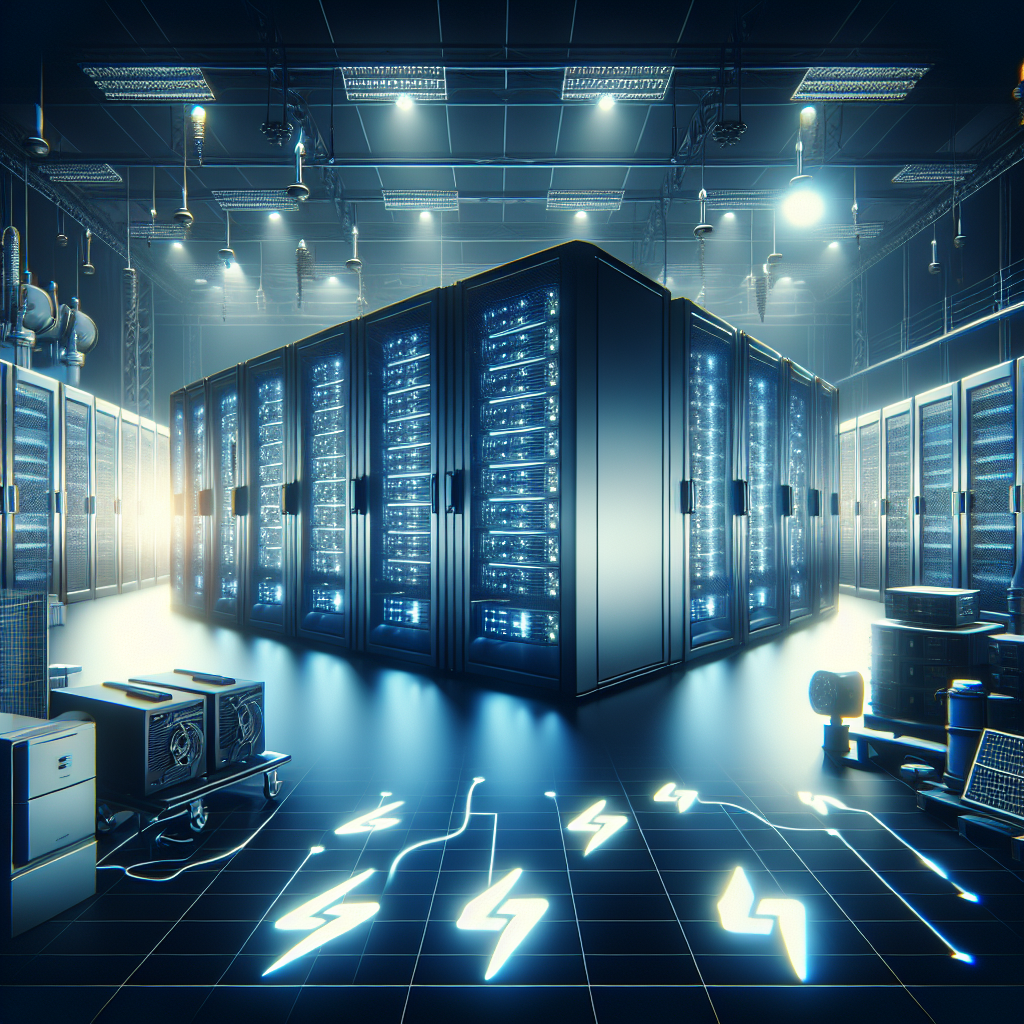
Ensuring Redundancy and Resilience in Data Center Electrical Infrastructure
In today’s digital age, data centers play a crucial role in storing and processing vast amounts of information for businesses and organizations. With the increasing reliance on technology, ensuring redundancy and resilience in data center electrical infrastructure is essential to prevent downtime and ensure continuous operations.Redundancy refers to having backup systems in place to ensure that data center operations can continue uninterrupted in the event of a power outage or equipment failure. This is crucial for maintaining the reliability and availability of data center services. Resilience, on the other hand, refers to the ability of the data center infrastructure to withstand and recover from disruptions or failures.
There are several key strategies that data center operators can implement to enhance redundancy and resilience in their electrical infrastructure:
1. Dual power feeds: Data centers should have dual power feeds from different utility sources to ensure continuous power supply in case of an outage. This can be achieved by connecting the data center to multiple utility grids or by using backup generators.
2. Uninterruptible Power Supply (UPS) systems: UPS systems provide temporary power backup in case of a sudden power outage. They help prevent data loss and ensure that critical systems remain operational until backup generators kick in.
3. Backup generators: Backup generators are essential for providing long-term power backup during extended outages. Data centers should have backup generators that are regularly tested and maintained to ensure they function properly when needed.
4. Redundant power distribution: Data centers should have redundant power distribution paths to ensure that power is distributed evenly and efficiently to all equipment. This helps prevent overloads and ensures that critical systems have access to power at all times.
5. Monitoring and maintenance: Regular monitoring and maintenance of electrical infrastructure are essential to identify potential issues before they escalate into major problems. Data center operators should conduct routine inspections, testing, and maintenance of electrical systems to ensure they are in optimal condition.
6. Disaster recovery planning: Data centers should have a comprehensive disaster recovery plan in place to address potential risks and ensure that operations can be quickly restored in the event of a major disruption. This plan should include provisions for backup power supply, data backup and recovery, and communication protocols.
By implementing these strategies, data center operators can enhance redundancy and resilience in their electrical infrastructure, ensuring continuous operations and minimizing the risk of downtime. This not only helps protect critical data and services but also enhances the overall reliability and performance of the data center.

Key Components of a Reliable Data Center Network Infrastructure
A reliable data center network infrastructure is crucial for the smooth operation of any organization’s IT systems. Without a strong and dependable network, data transfer speeds can slow down, leading to decreased productivity and potential downtime. In order to ensure that your data center network is reliable, there are several key components that must be in place.1. Redundant Network Connections: One of the most important components of a reliable data center network infrastructure is redundant network connections. This means having multiple connections to the internet and other networks, so that if one connection fails, traffic can be rerouted through another connection. Redundancy is essential for ensuring that data can continue to flow even in the event of a network outage.
2. High-Speed Network Switches: Network switches are responsible for directing traffic between devices on a network. In a data center environment, high-speed network switches are essential for ensuring fast data transfer speeds and low latency. Look for switches that support high bandwidth and low latency to ensure that your network can handle the demands of your organization.
3. Scalable Network Architecture: As your organization grows, your data center network infrastructure needs to be able to scale to accommodate increased traffic and data transfer needs. A scalable network architecture allows you to easily add new devices and connections to your network without causing disruptions to existing services. Look for network equipment and technologies that are easily scalable to meet the evolving needs of your organization.
4. Network Security Features: Data security is a top priority for any organization, and a reliable data center network infrastructure must have robust security features in place. This includes firewalls, intrusion detection systems, and encryption protocols to protect data as it travels across the network. Regular security audits and updates are also essential to ensure that your network remains secure against the latest threats.
5. Monitoring and Management Tools: To ensure that your data center network infrastructure is running smoothly, it is important to have monitoring and management tools in place. These tools allow you to track network performance, identify bottlenecks, and troubleshoot issues in real-time. Look for network monitoring software that provides detailed analytics and alerts to help you proactively manage your network infrastructure.
In conclusion, a reliable data center network infrastructure is essential for the smooth operation of any organization’s IT systems. By ensuring that key components such as redundant network connections, high-speed network switches, scalable architecture, network security features, and monitoring tools are in place, you can create a network that is reliable, secure, and able to meet the evolving needs of your organization. Investing in a strong network infrastructure is crucial for ensuring that your organization’s data remains secure and accessible at all times.

Future-Proofing Your Data Center Network Infrastructure
In today’s fast-paced digital world, data centers are the backbone of businesses, storing and processing vast amounts of information critical to operations. As technology continues to evolve, it’s imperative to future-proof your data center network infrastructure to ensure scalability, reliability, and security.Future-proofing your data center network infrastructure involves planning and implementing strategies to accommodate the growing demands of data and applications. Here are some key steps to consider:
1. Embrace software-defined networking (SDN): SDN allows for centralized network management and automation, making it easier to adapt to changing network requirements. By separating the control plane from the data plane, SDN enables more flexibility and agility in managing network resources.
2. Adopt virtualization: Virtualization technology allows for the consolidation of servers, storage, and networking resources, reducing hardware costs and improving resource utilization. Virtualized networks can easily scale to meet growing demands and can be provisioned and configured rapidly.
3. Invest in high-speed networking equipment: As data volumes continue to increase, high-speed networking equipment, such as 10G, 40G, and 100G switches and routers, will be essential to support the bandwidth requirements of applications and services. Upgrading to faster networking equipment will help ensure that your data center can handle future traffic growth.
4. Implement redundancy and failover mechanisms: Building redundancy into your network infrastructure is critical to ensuring high availability and fault tolerance. Redundant power supplies, network links, and network switches can help prevent downtime and ensure data center continuity in the event of a failure.
5. Enhance security measures: With the rise of cyber threats and data breaches, ensuring the security of your data center network infrastructure is paramount. Implementing firewalls, intrusion detection and prevention systems, encryption protocols, and access controls can help protect your data and infrastructure from malicious attacks.
6. Monitor and analyze network performance: Regularly monitoring and analyzing network performance metrics can help identify bottlenecks, optimize network traffic, and proactively address potential issues before they impact operations. Utilizing network monitoring tools and analytics software can provide valuable insights into network performance and help optimize network efficiency.
By future-proofing your data center network infrastructure, you can ensure that your organization is equipped to handle the evolving demands of data and applications. Investing in technologies such as SDN, virtualization, high-speed networking equipment, redundancy, security measures, and network monitoring can help position your data center for long-term success and growth.
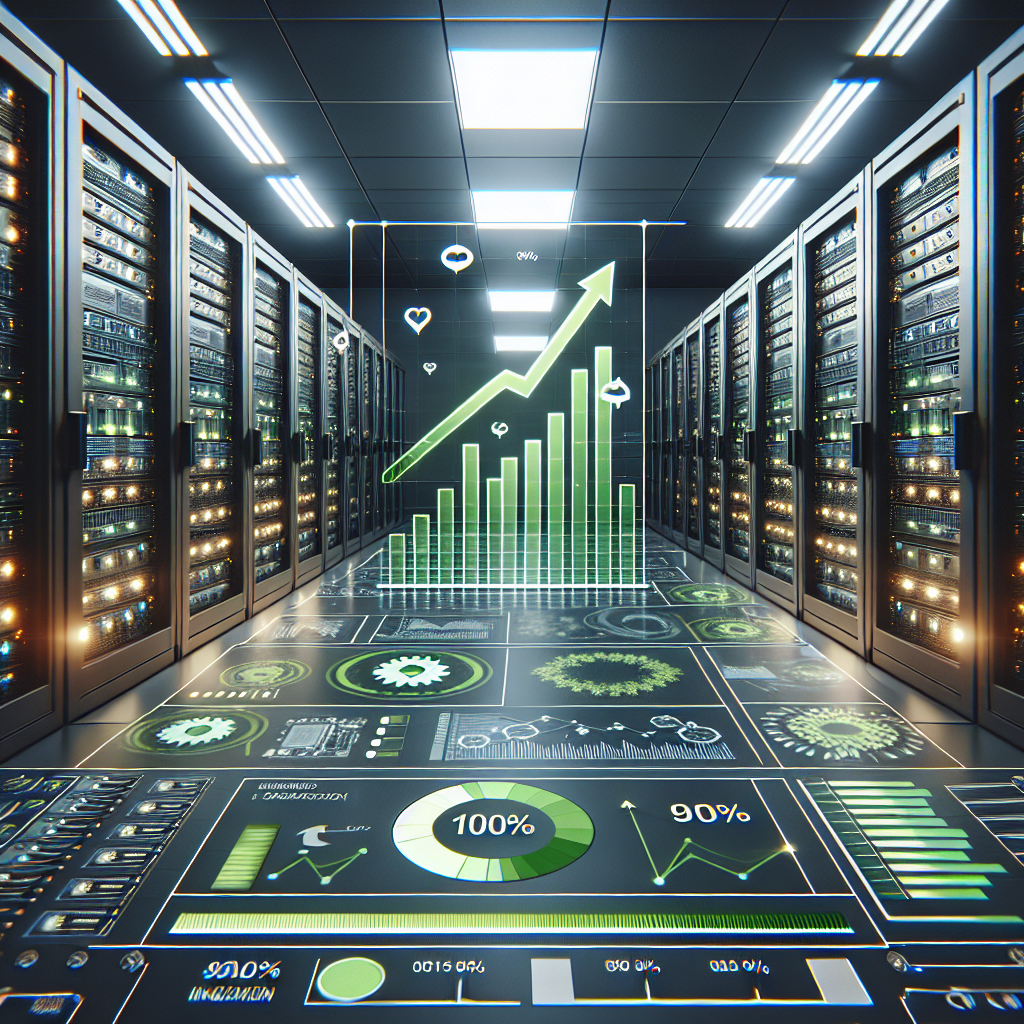
Maximizing Efficiency and Performance with Data Center Infrastructure Management (DCIM)
In today’s digital age, data centers play a crucial role in supporting the operations of businesses and organizations. As the demand for data storage and processing continues to grow, it is essential for data center operators to maximize efficiency and performance to meet the increasing demands of users.Data Center Infrastructure Management (DCIM) is a software-based solution that allows data center operators to monitor, manage, and optimize the performance of their data center infrastructure. By utilizing DCIM, operators can gain valuable insights into their data center environment, enabling them to make informed decisions that improve efficiency and performance.
One of the key benefits of DCIM is its ability to provide real-time visibility into the performance of critical infrastructure components, such as servers, storage, and networking equipment. By monitoring key performance metrics, operators can identify potential issues before they escalate into major problems, helping to prevent downtime and ensure uninterrupted operations.
Additionally, DCIM can help operators optimize the use of resources within the data center, such as power and cooling. By analyzing power and cooling consumption data, operators can identify opportunities to improve efficiency and reduce operating costs. For example, by consolidating servers or adjusting cooling settings, operators can minimize energy consumption while maintaining optimal performance.
Furthermore, DCIM can help operators plan for future growth and expansion of their data center infrastructure. By analyzing historical data and trends, operators can forecast future capacity requirements and make informed decisions about equipment upgrades or expansions. This proactive approach can help prevent bottlenecks and ensure that the data center can scale to meet the demands of a growing business.
In conclusion, maximizing efficiency and performance with Data Center Infrastructure Management is essential for data center operators looking to stay competitive in today’s fast-paced digital landscape. By leveraging the insights provided by DCIM, operators can improve the reliability, scalability, and cost-effectiveness of their data center infrastructure, ultimately enhancing the overall performance of their organization.
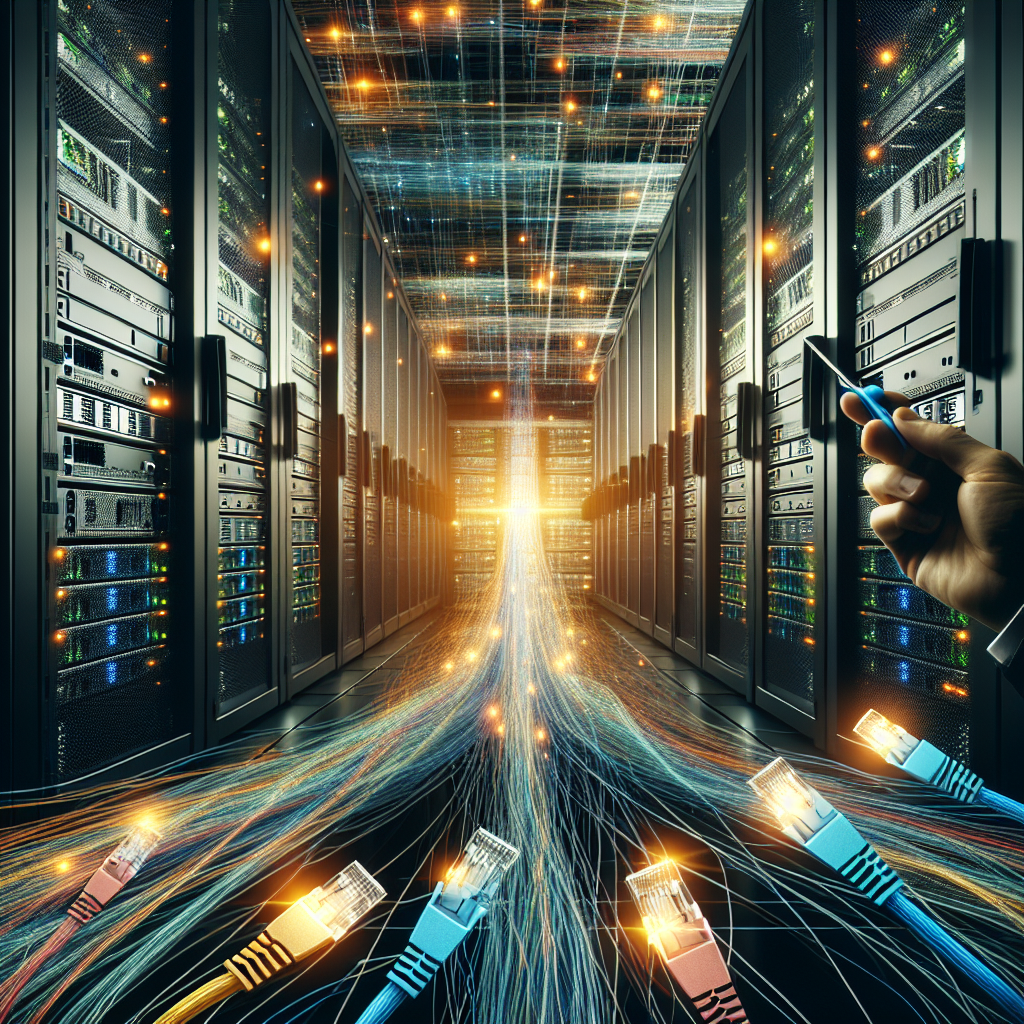
Maximizing Efficiency: Best Practices for Data Center Network Infrastructure
In today’s digital age, data centers are the backbone of most organizations, housing the critical hardware and software that support their operations. As the amount of data being generated and processed continues to grow exponentially, the need for efficient and reliable network infrastructure within data centers has never been more important. Maximizing efficiency in data center network infrastructure is crucial for ensuring optimal performance, scalability, and cost-effectiveness.There are several best practices that organizations can follow to maximize the efficiency of their data center network infrastructure:
1. Design for Scalability: When designing or upgrading a data center network, it is essential to plan for future growth and scalability. This includes considering factors such as the number of servers, storage devices, and network devices that will need to be supported, as well as the potential for increased data traffic. By designing a scalable network infrastructure, organizations can avoid the need for costly upgrades or replacements in the future.
2. Utilize Virtualization: Virtualization technology allows organizations to maximize the use of their hardware resources by creating virtual instances of servers, storage, and network devices. By consolidating physical hardware and running multiple virtual machines on a single server, organizations can reduce power consumption, cooling costs, and physical space requirements in their data centers.
3. Implement Network Automation: Automation tools and software can help streamline network management tasks, reduce human error, and improve overall network efficiency. By automating routine tasks such as network provisioning, configuration management, and troubleshooting, organizations can free up IT staff to focus on more strategic initiatives.
4. Embrace Software-Defined Networking (SDN): SDN technology allows organizations to centrally manage and control their network infrastructure using software-based controllers. By separating the control plane from the data plane, SDN enables organizations to quickly adapt to changing network conditions, optimize traffic routing, and implement security policies more effectively.
5. Monitor and Analyze Network Performance: Regular monitoring and analysis of network performance metrics are essential for identifying potential bottlenecks, optimizing resource utilization, and ensuring the overall health of the data center network infrastructure. By using network monitoring tools and analytics software, organizations can proactively detect and resolve issues before they impact performance.
6. Implement Redundancy and Disaster Recovery Measures: To ensure high availability and reliability of the data center network infrastructure, organizations should implement redundancy and disaster recovery measures. This includes deploying redundant network connections, power supplies, and cooling systems, as well as developing a comprehensive disaster recovery plan to mitigate the impact of unforeseen events.
By following these best practices for maximizing efficiency in data center network infrastructure, organizations can ensure that their data centers are able to meet the growing demands of the digital economy. By designing a scalable and reliable network infrastructure, implementing automation and virtualization technologies, and proactively monitoring network performance, organizations can optimize their data center operations and deliver a superior user experience.
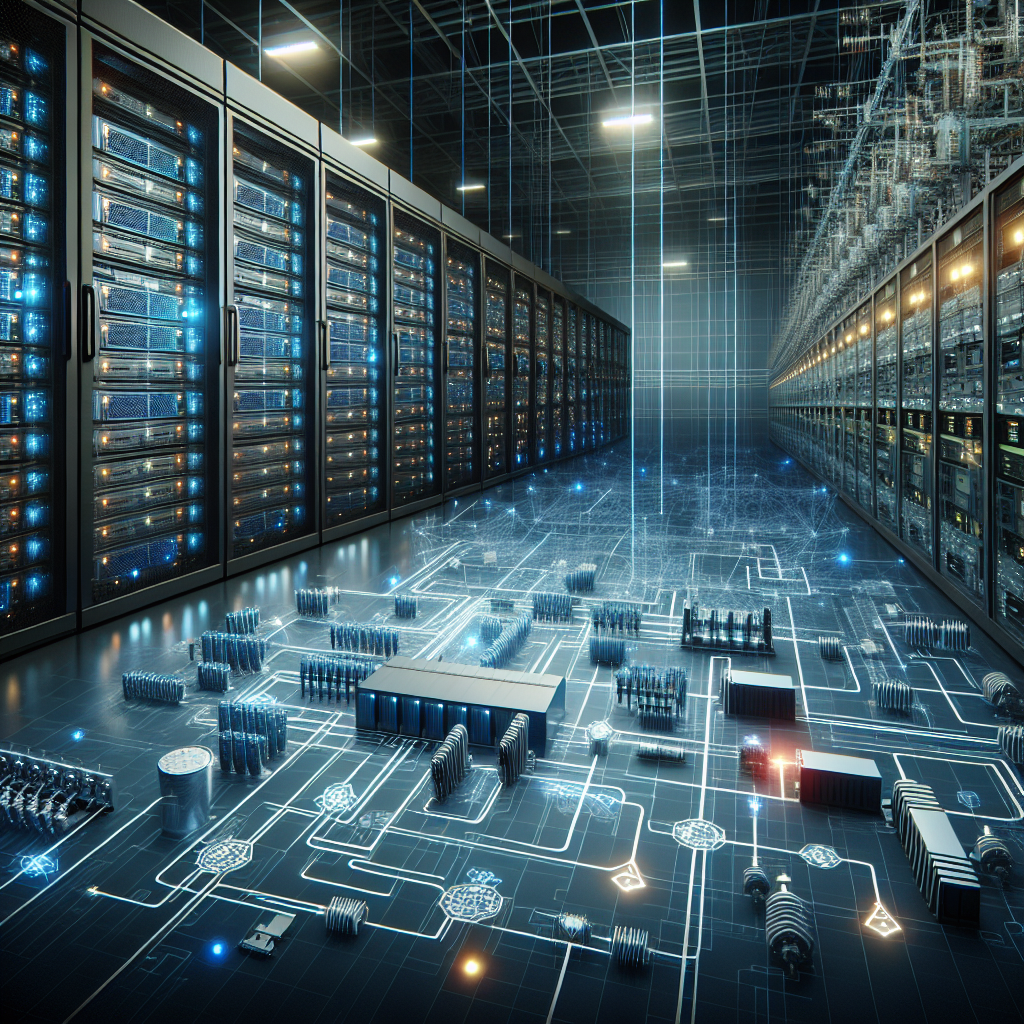
Understanding the Role of Electrical Infrastructure in Data Center Operations
Data centers play a crucial role in today’s digital world, serving as the backbone of the internet and powering the technology that we rely on every day. However, behind the scenes of these massive facilities lies a complex network of electrical infrastructure that is essential for their operation.Understanding the role of electrical infrastructure in data center operations is key to ensuring the reliable and efficient performance of these facilities. From powering servers and cooling systems to ensuring uninterrupted operation during power outages, electrical infrastructure is the lifeblood of data centers.
One of the primary functions of electrical infrastructure in data centers is to provide power to the servers and networking equipment that store and process data. This requires a robust electrical system capable of delivering high levels of power to support the demanding requirements of modern data centers. This includes redundant power supplies, backup generators, and uninterruptible power supply (UPS) systems to ensure continuous operation in the event of a power outage.
In addition to providing power to the equipment, electrical infrastructure also plays a crucial role in maintaining the optimal operating conditions within the data center. This includes powering the cooling systems that regulate the temperature and humidity levels to prevent overheating and ensure the reliability of the equipment. Proper ventilation and air conditioning systems are essential to keeping the servers running smoothly and preventing downtime due to overheating.
Furthermore, the electrical infrastructure in data centers must be designed to accommodate the growing demand for power as data center operations continue to expand. This requires careful planning and design to ensure that the electrical system can support the increasing power requirements of new servers and networking equipment.
Another important aspect of electrical infrastructure in data centers is the implementation of energy-efficient technologies to reduce power consumption and minimize the environmental impact of these facilities. This includes the use of energy-efficient servers, cooling systems, and lighting, as well as the implementation of power management systems to optimize energy usage and reduce operating costs.
In conclusion, the role of electrical infrastructure in data center operations cannot be overstated. From providing power to the equipment and maintaining optimal operating conditions to accommodating the growing demand for power and implementing energy-efficient technologies, electrical infrastructure is essential for the reliable and efficient operation of data centers. By understanding the importance of electrical infrastructure in data centers, organizations can ensure the performance and reliability of their facilities and meet the ever-increasing demands of the digital world.
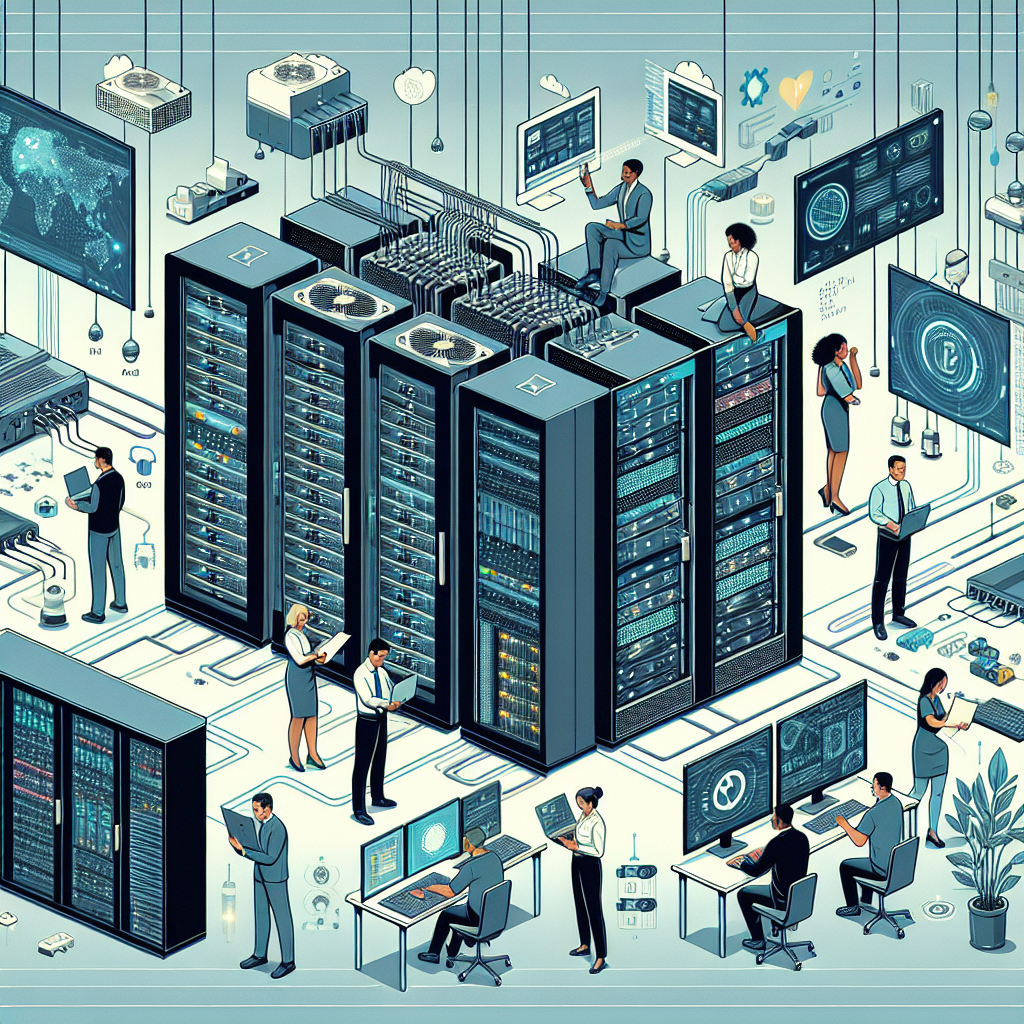
The Importance of Data Center Infrastructure Management (DCIM) in Modern IT Environments
In today’s digital age, data has become one of the most valuable assets for businesses. With the rise of big data, cloud computing, and the Internet of Things (IoT), the amount of data being generated and processed by organizations is growing at an exponential rate. As a result, the need for efficient data center infrastructure management (DCIM) has become more critical than ever before.DCIM is a comprehensive solution that helps organizations monitor, manage, and optimize their data center infrastructure. It provides real-time visibility into the performance and utilization of servers, storage, networking equipment, and other critical components of the data center. By centralizing and automating the monitoring and management of these resources, DCIM enables organizations to improve operational efficiency, reduce downtime, and lower costs.
One of the key benefits of DCIM is its ability to help organizations make informed decisions about their data center infrastructure. By providing detailed insights into the performance and capacity of their IT resources, DCIM enables organizations to identify bottlenecks, optimize resource utilization, and plan for future growth. This, in turn, allows organizations to maximize the value of their IT investments and ensure that their data center infrastructure is aligned with their business goals.
In addition to improving operational efficiency, DCIM also plays a crucial role in ensuring the reliability and availability of IT services. By monitoring key performance indicators and alerting IT staff to potential issues, DCIM helps organizations proactively address problems before they escalate into full-blown outages. This proactive approach to IT management not only minimizes downtime but also helps organizations deliver a superior level of service to their customers.
Furthermore, DCIM can also help organizations comply with regulatory requirements and industry standards. By providing detailed reports and analytics on their data center infrastructure, organizations can demonstrate compliance with regulations such as the Sarbanes-Oxley Act, HIPAA, and PCI DSS. This not only helps organizations avoid costly penalties but also enhances their reputation as a trusted custodian of sensitive data.
In conclusion, DCIM is an essential tool for modern IT environments. By providing organizations with real-time visibility, proactive monitoring, and compliance reporting, DCIM enables organizations to optimize their data center infrastructure, improve operational efficiency, and deliver a superior level of service to their customers. As data continues to grow in importance, organizations that invest in DCIM will be better positioned to succeed in the digital economy.
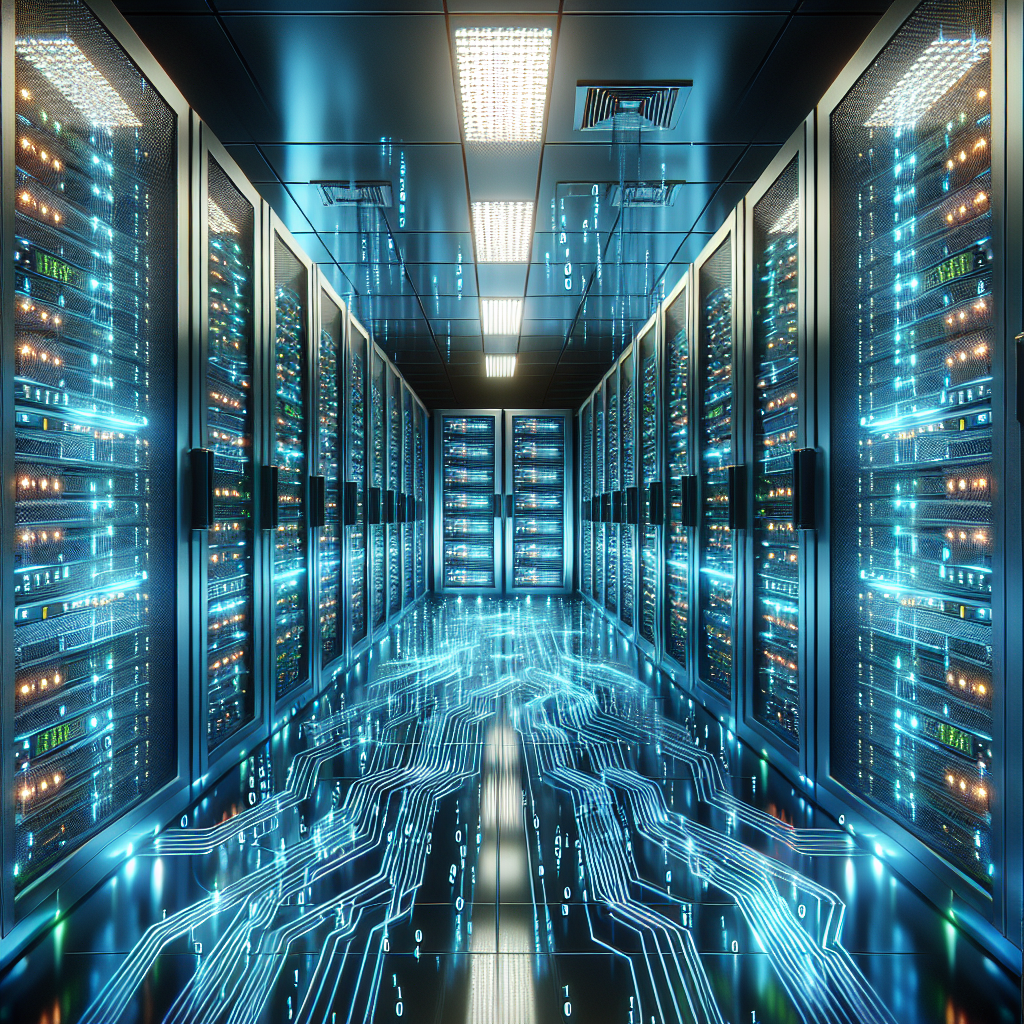
The Importance of Data Center Network Infrastructure in the Digital Age
In today’s digital age, data centers play a crucial role in storing, processing, and managing vast amounts of data. With the increasing reliance on technology and the rise of big data, the need for robust and reliable data center network infrastructure has never been more important.Data center network infrastructure refers to the physical and virtual components that enable communication and data transfer within a data center. This includes routers, switches, servers, storage devices, and cables, as well as software-defined networking (SDN) and virtualization technologies.
One of the key reasons why data center network infrastructure is so important is its impact on the performance and reliability of the data center. A well-designed and optimized network infrastructure can ensure high-speed data transfer, low latency, and minimal downtime, which are critical for meeting the demands of modern digital applications and services.
In addition, a strong network infrastructure is essential for ensuring data security and compliance with data protection regulations. By implementing security measures such as firewalls, encryption, and access controls, data center operators can protect sensitive data from cyber threats and unauthorized access.
Furthermore, data center network infrastructure plays a crucial role in enabling scalability and flexibility. As data volumes continue to grow exponentially, data center operators need to be able to scale their infrastructure quickly and efficiently to meet the increasing demand for storage and processing capacity. By leveraging technologies such as cloud computing and SDN, organizations can adapt their network infrastructure to changing business needs and market conditions.
Another important aspect of data center network infrastructure is its impact on energy efficiency and sustainability. Data centers are known for their high energy consumption, and optimizing network infrastructure can help reduce power consumption and carbon emissions. By consolidating servers, optimizing cooling systems, and implementing energy-efficient networking technologies, data center operators can minimize their environmental footprint and reduce operational costs.
In conclusion, data center network infrastructure is a critical component of modern digital infrastructure. By investing in robust and reliable network infrastructure, organizations can ensure high performance, data security, scalability, and energy efficiency in their data centers. As the digital age continues to evolve, the importance of data center network infrastructure will only continue to grow, making it essential for organizations to prioritize and invest in this critical technology.
